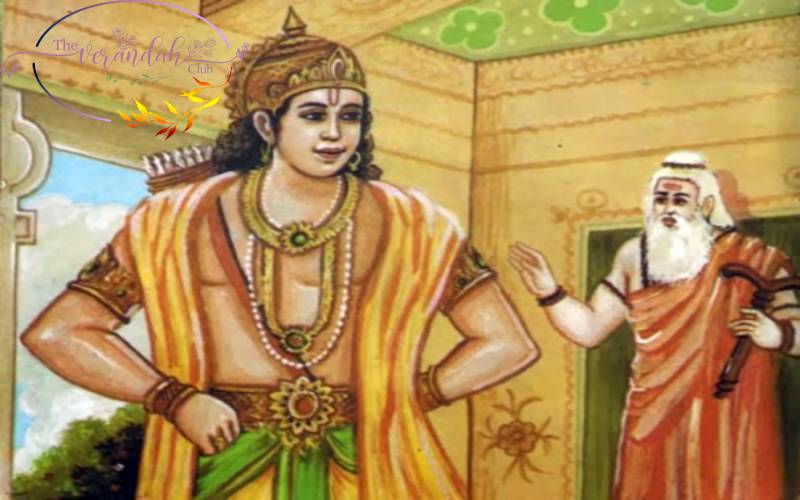
Ardent Vaishnavites visit the holy shrine of Aadhipiraan at Azhwar Thirunagari (Thirukurugur) near Thirunelvelli at least once during their lifetime. This deity is also known as Aadhinathan. An ancient tamarind tree is present in this temple. The great saint, Nammaazhwaar, spent 16 years in a cavity found on the tamarind tree present in this temple. This temple is part of the navathirupathi-s and is located on the banks of the sacred Thamiraparani River.
The incarnation of Rama was getting completed and only three days were left out for Rama to enter River Sarayu in Ayodhya. Yamadharmaraja had come to meet Rama in his private chambers. Lord Rama advised his brother Lakshmana to stand guarding the entrance and told him not to let anybody inside. Meanwhile, the short-tempered Sage Durvasa came about to meet Rama. Lakshmana did not want to offend the sage and therefore he let him inside. Lord Rama hosted Sage Durvasa and sent him away.
However, Rama cursed Lakshmana to become a tree, for he had stood like a tree during the visit of Sage Durvasa. This worried Lakshmana to no end, for he never wished to leave Rama. Lakshmana is believed to be an incarnation of Adisesha. Rama told Lakshmana that he had to spend 16 years in the same spot for having made Seetha spend a long time in the forest. Rama was supposed to stay that way without moving or making a sound and that he wished to stay so on the lap of Lakshmana. Therefore, Lakshmana had been cursed to be born as a tree.
Accordingly, Lakshmana was advised to go to the southern side of River Thamiraparani and be present there as a tamarind tree. Lakshmana was given the Kanayaali (Ring of Rama) and was asked to go to the Varahakshetram. He was ordered to stand in as a tamarind tree in the place where the kanayaali fell down.
Sage Kashyapa was born as King Kaari and his wife was born as Vudayanangai. Both went to Kurugur and observed the austerities to beget a son. Lord Rama was to be born as their child. This was to fulfil a latter-day promise that was be made to Vasudeva and Devaki during dwaparayuga. They wanted salvation, and this was provided to them in the kaliyuga. Lord Rama who was born as Krishna, later incarnated as Nammaazhwaar.
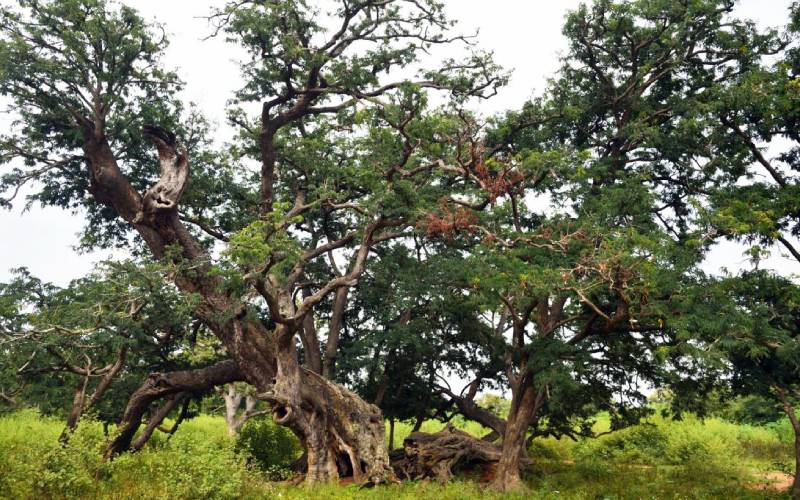
This child was brought to this temple, and he called and entered the cavity inside the tamarind tree present here. The child is said to have stayed there for 16 years. There were several cavities present in this tamarind tree and if an incident that would not be approved by Nammaazhwaar took place in the temple, it was believed a fluid would come out of the tree. As promised, Lord Rama stayed on the lap of the tamarind tree in the form of Lakshmana for 16 years and he composed the ‘Thiruvaaimozhi’ after this period. This text is part of the 4000-versed ‘Divya Prabandham’ and it was composed in the tree itself.
The deities in the other divya desam-s wanted to visit the same tree that has hosted Lord Rama and therefore they came and sat on the leaves and branches of this sacred tree and requested Saint Nammaazhwaar to sing verses of ‘Prabandham’ about each one of them. Saint Nammaazhwaar obliged them then and there. He was the only aazhwaar who composed the divine verses from the cavity found in the tamarind tree itself and therefore he never had to visit any of the divya desam-s. There are 7 branches for this tamarind tree.
Thus, the puliyamaram or the tamarind tree is sacred in India. It is a leguminous tree which bears an edible fruit. The Tamarindus Indica is supposed to be indigenous to Africa but is found in India for thousands of years. Therefore, it is considered to be native to India too. India is today the largest producer of tamarind in the world. The tamarind fruit is about four and half to six inches long and has a hard brown shell. The fruit has a fleshy, juicy, and acidic pulp. It is mature when the flesh is reddish brown.
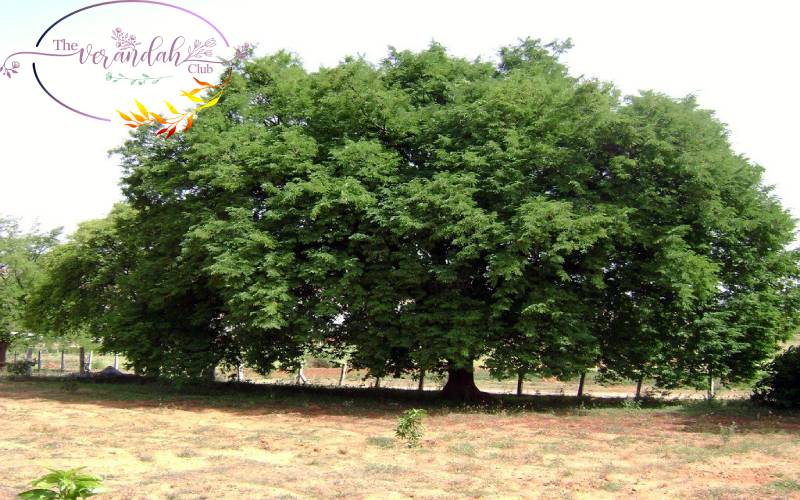
The tamarinds of Asia have longer parts and they contain anywhere in between 6 to 12 seeds. The tamarind fruit is described as sweet and sour. It is high in tartaric acid, sugar, vitamin, and calcium. A mature tree is capable of producing up to 175 kgs of tamarind per year. Every part of the tamarind fruit is used. The rasam and saambaar of India contains tamarind. Tamarind seed oil is made from the kernel of the seed and the kernel powder is used as sizing material for textile processing. It is also used in the manufacture of industrial gums and adhesives.
Tamarind pulp is the key ingredient for flavouring rice and is also used in the Chigali lollipop. Tamarind rice or puliyodharai is a famous offering at temples and particularly Vaishnavite temples. The puliyodharai from Melkottai Thirunarayanapuram is supposed to be much preferred.
The tamarind is a medium-sized tree and lives for a long time. It attains a maximum crown height of 12 to 18 mts. The tree grows well in the suns, and it prefers clay, loam, sandy, and acidic soil types. The evergreen leaves are alternatively arranged and pinnately lobbed. The leaflets are bright green and less than 5 cms in length. The branches droop from a central trunk and the leaflets close-up at night. Tamarind flowers are red and yellow elongated and one inch wide. The tender leaves of the tamarind is used in the Indian cuisine and the pulp and the fruit is used in Indian medicine. It is also used as metal polish. The tamarind is known with different names in different parts of the world, Tamarindo in Latin America), Tamon in Caribbean, Sampaloc in Philippines, etc.
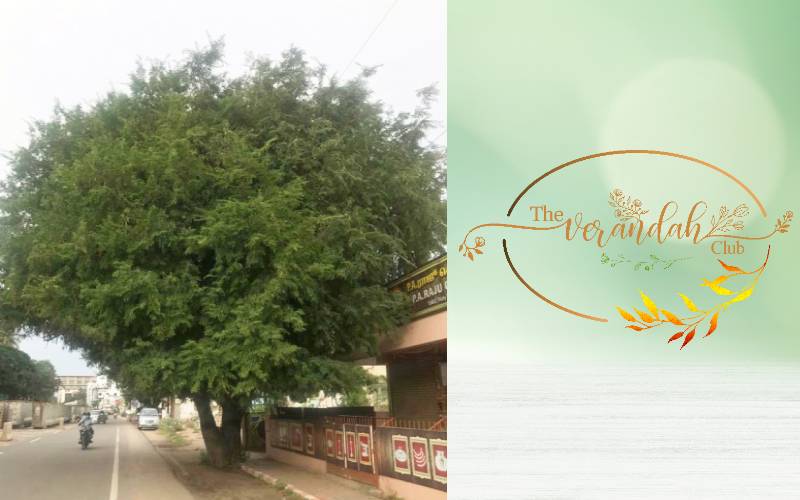
The famous tamarind tree at Perur near Coimbatore in Tamil Nadu is known as piravapulli, for its seeds do not germinate. Perur is considered to be a Mukti-sthalam (The place one attains salvation) and therefore the seed does not germinate. There are several tamarind trees, and these are present in several temples. This is believed to be the grace of God. There is story of Thirumangai Aazhwar and a tamarind tree.
The great saint was in need of gold in order to refurbish the Sri Rangam Temple. He went to Nagapattinam and sang in front of huge buddha statue which contained gold. He was able to receive the gold without disturbing it. On his way back, he slept under a tamarind tree and to preserve the gold safely, he requested the tree not to sleep. It is also believed that ghosts reside in the tamarind tree. Such believes are unfounded.
Let us now, look at a true ghost story connected with the famous Pravachana karta (Religious speaker) Sengalipuram Sri Anantarama Deekshithar. He had written about the greatness of his forefathers in the eighth part of his book, ‘Jayamangala Stotram.’ If a brahmin commits suicide or a crime, he becomes a ghost, and such a ghost is known as Brahmaraakshasha.
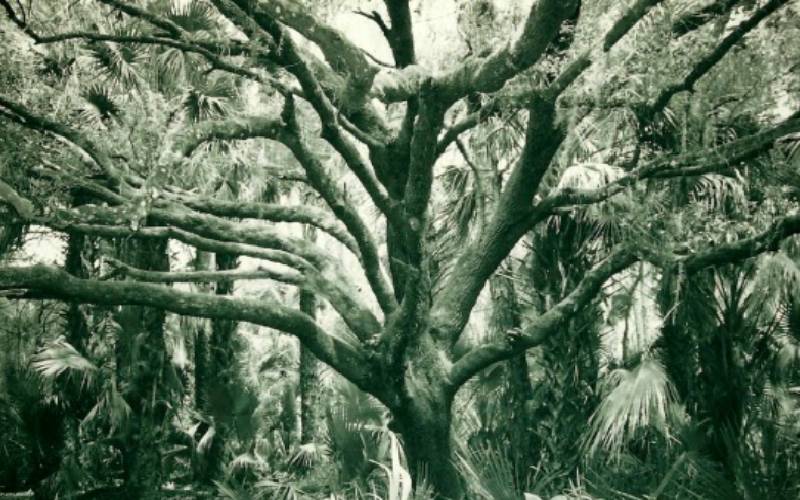
One day a wife of a rich man got possessed by a Brahmaraakshasha and the family underwent a lot of difficulties due to the same. The husband engaged a magician and a pooja was conducted. The magician threatened the ghost to leave, and the ghost told the magician that it would leave once it received the blessings of the eldest member of the family who was known as Periya Mutthanna (Big Mutthanna). The actual name of the person was Vaidyanatha Deekshithar and he was hesitant to undertake this non-religious mission. However, he agreed to bless the ghost and release it from the bondage of ghost-hood in the interest of the family.
The ghost agreed to leave, and the magician wanted a proof. The ghost told him that it would leave through a tamarind tree found at the backyard of the house and they would know about the same by hearing the noise of the breaking branches of the tree. The family was surprised to hear a big noise in the night, and it happened at the time when the ghost left. They went to the backyard in the morning and were amazed to see a huge broken branch that had fallen from the tamarind tree. Thereafter, the lady of the house was free from the influence of the ghost.
The stories and the legends connected with the tamarind tree continue to add flavour to our country. It is definitely a food for thought.
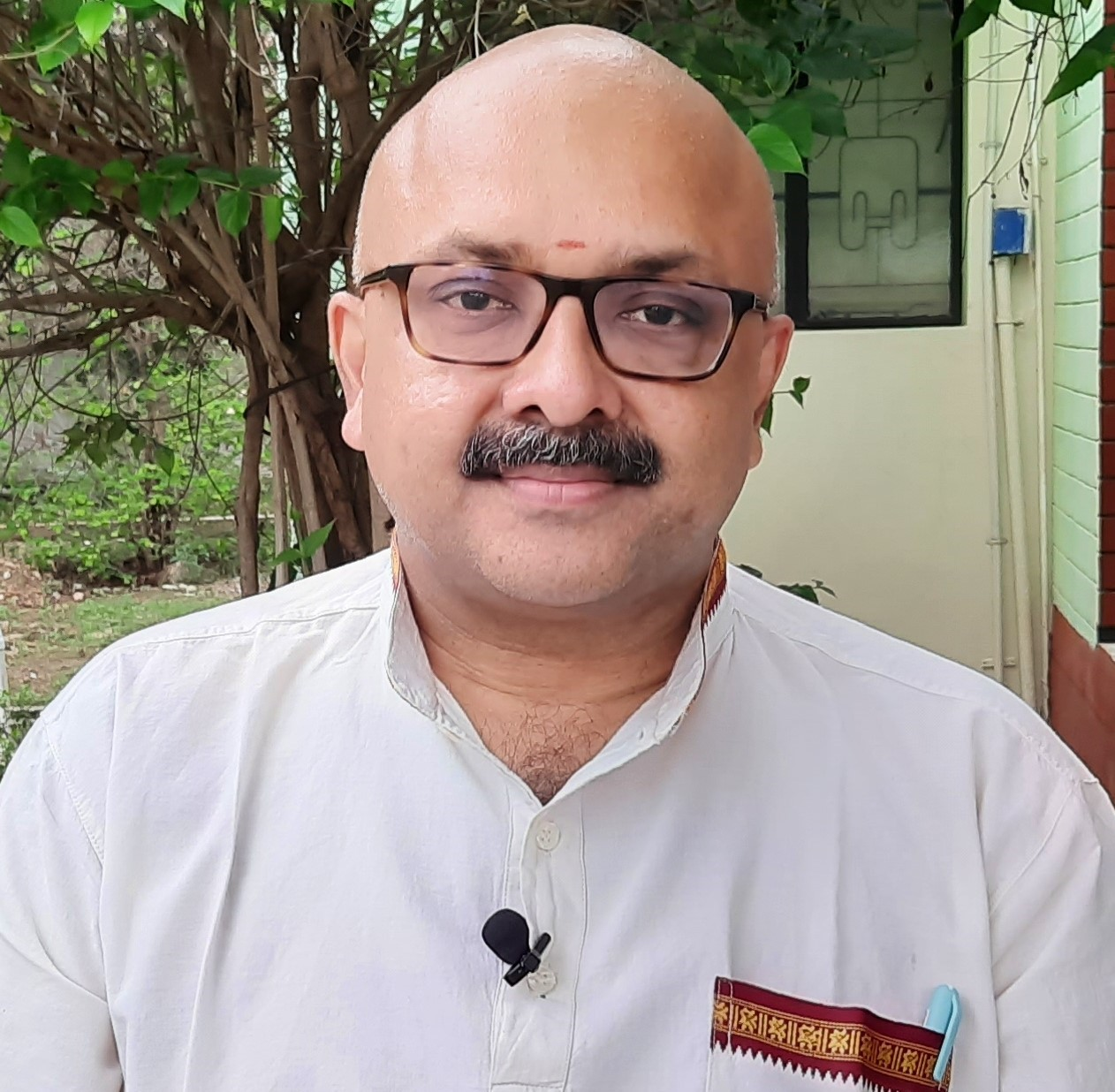
Mr. Rajesh Govindarajulu is one of the founding members of the Verandah Club Pvt. Ltd. He is a leading columnist, historian, jeweler, entrepreneur, and a heritage enthusiast who is earnestly working to revive the past in the light of the present. Experiential learning about the history of Coimbatore is his main course of interest and he is also a panel member of many colleges in the city.
NEXT ARTICLE
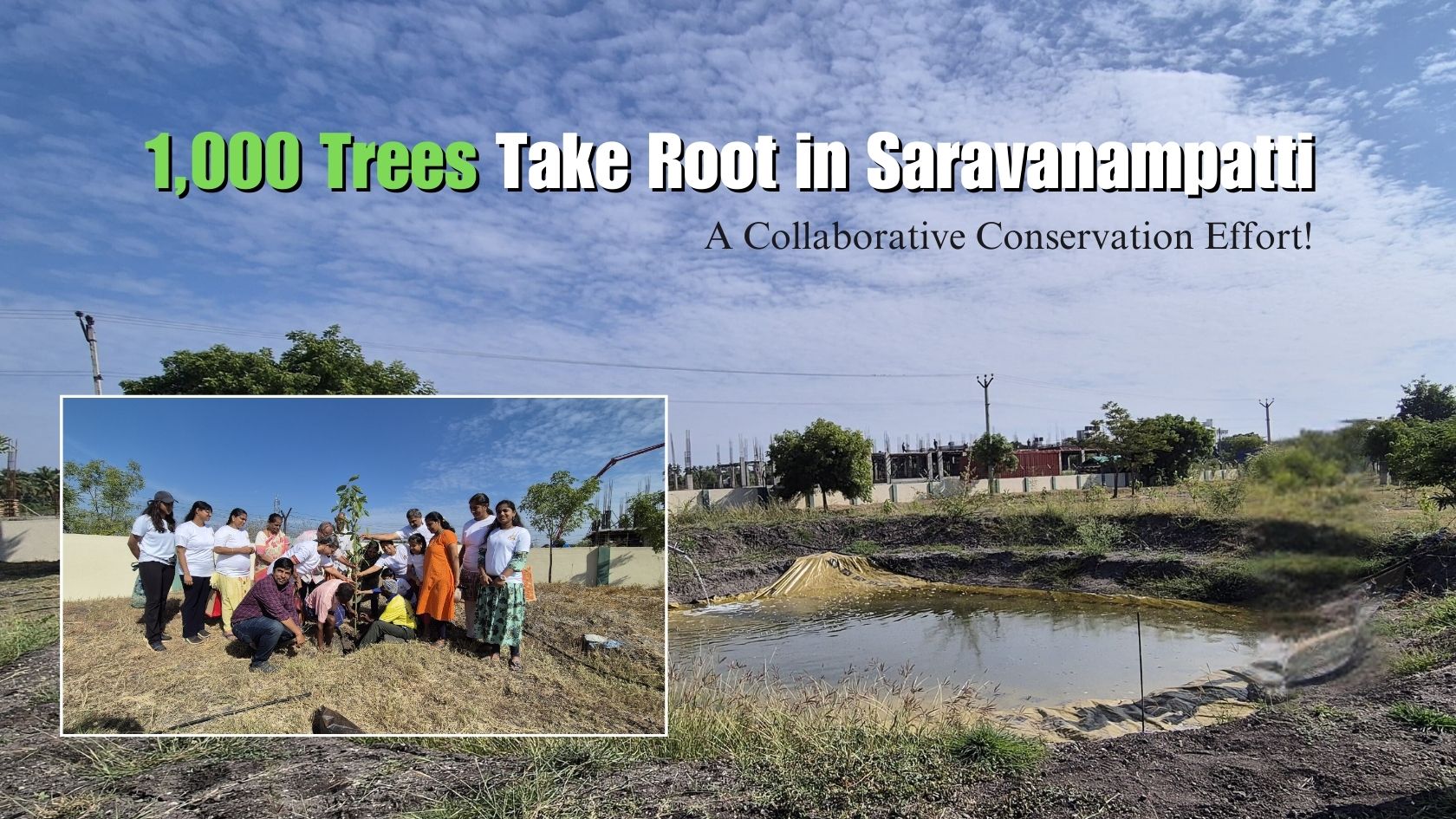
A group of eager volunteers and nature enthusiasts, gathered amidst the lush greenery, ready to embark on a mission to enhance the beauty of our surro...